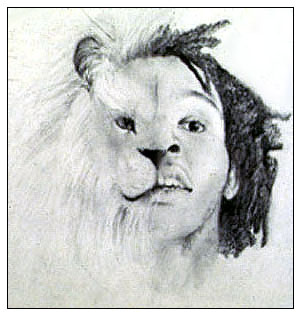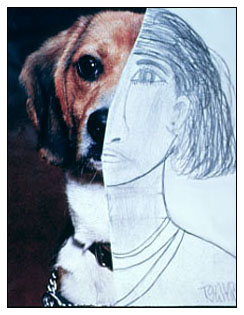Bisociation Definition:
Bisociation: The mixture in one human mind of visual physiognomies from two contexts or categories of objects that are normally considered separate categories by the literal processes of the mind. The thinking process that is the functional basis for metaphoric thinking. This is a term coined by the author Arthur Koestler in his book "The Act of Creation." Koestler invented this term to distinguish the type of analogical thinking that leads to the acts of great creativity from the more pedestrian associative (purely logical) thinking, with which we are so familiar in our everyday lives.


Related Concepts:
Visual Puns: Creating an artwork in which several visual forms which look alike (thinking by appearance in the right hemisphere) are connected and combined so as to bring out two or more possible meaningful ideas in a humorous way. Because of the obviously separate nature of the two forms being humorously combined, visual puns are a lower form of visual metaphor.
Visual Satire: Art forms that use bisociation in an intentional way to make visual "look alike" comparisons between unlike objects to make meaningful exposures of vices, follies, stupidity, abuses, or hidden character. A more sophisticated form of bisociation than visual puns, works of visual satire imply that serious purpose is intended, even when it is communicated in a humorous way. Caricature is a form of visual satire.
Visual Merging: Term coined by NAB to specify a level of bisociation where the separate objects with their associated physiognomic qualities are being merged toward the level of hidden metaphoric expressions (disguised symbolism). The objects at the visual merging level are, however, still identifiable as separate objects being referred to visually.
Boundary Stretching: Psychological term that denotes the bisociation of separate physiognomic entities in such a way that traditional categorical boundaries become elastic to include a wider range of objects, ideas or themes.
Boundary Breaking: Psychological term that denotes a level of bisociation that is so hidden and subtle that it creates a totally new category of classification; the invention of new visual meaning of great creativity.
Bisociation
